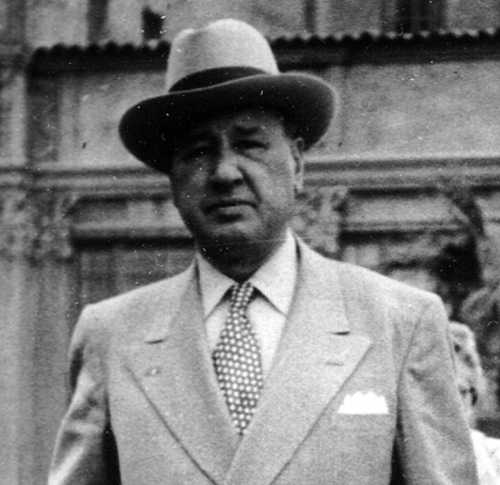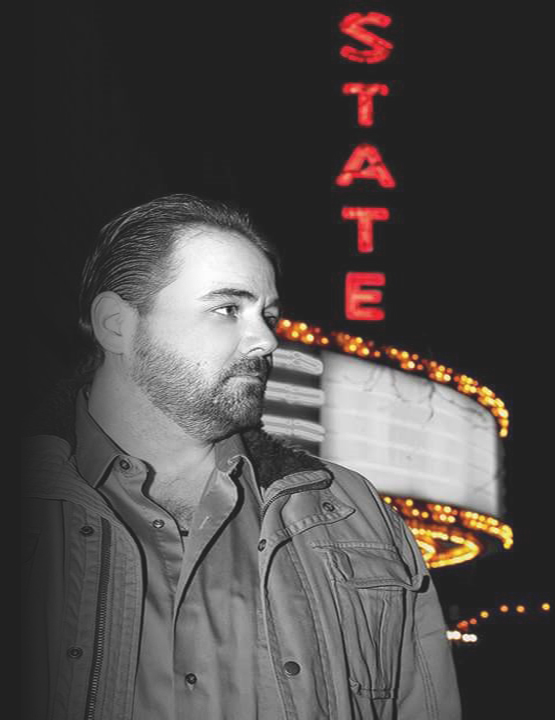The Classic State-Wayne Theatre
70 Years of life long memories in Wayne's very own "Classic Cinema" Experience
Take a Virtual TourWe have spent the better part of 2016 obtaining a collection of photographs chronicling the history of the State Wayne Theatre from the past seven decades. Since the theatre opening in December of 1946, the exterior has had few noticeable modifications, with the majority of the changes occurring inside to accommodate the changing trends that have occurred to the movie industry. What is striking is that throughout the decades the theatre itself has become one of the constants in the Wayne community. An iconic building that everyone remembers as having always been there and always will be in Downtown Wayne. A place that invokes strong memories of first dates, trips to the movies with Grandparents, remembering when you first looked up and noticed the ever present dragon in the darkness of a Sunday matinee. Now celebrating 70 years as a movie theatre, we felt it was very important to preserve the photographic history, and provide a place to share personal stories of visits to this important civic place for the residents of Wayne and the surrounding communities.
Happy Anniversary - State-Wayne
Best Wishes,
Cory A. Jacobson
Owner
Phoenix Theatres - State-Wayne
How it all Began
One man's story that earned him the nickname "Movie Man"

Walter Shafer
In the spring of 1918 when Woodrow Wilson was President, Walter Shafer in the uniform of the U.S. Army was sent to New York City at the age of 26 to give "pep talks" from the leading stages of Broadway to promote the sales of war bonds. It was in New York that Walter was first introduced to the world of theatres. When the war ended on November 11, 1918, Shafer was free to pursue a career and his contacts in the theatres paid off. He was hired by the Fox Theatre Circuit to operate theatres in New York City, Elizabeth, New York, and Newark, New Jersey in the new industry of the movie business. While in Elizabeth he met a bank teller named Lillian Thiemer and soon after he proposed marriage and she became Mrs. Shafer.
Theatres in this era were offering a combination of live stage performances and silent films. The theatres were complicated and in some cases large operations with in-house orchestras, stagehands and a vast operational staff. Innovations in the quality of theatres, picture clarity and sound-on-film led to a great expansion in the new film business, and by the mid to late 1920’s the film exhibition industry was booming as a transition to film from live performances was beginning. William Fox was expanding his theatre chain rapidly and in 1920 and Mr. Shafer and his wife Lillian were quickly transferred to St. Louis for his new position as Manager of the Fox Theatre there. In 1921 he was promoted and transferred once again to Detroit to the original Fox Theatre, located on Washington Boulevard as Managing Director. In 1926 he helped direct the building of the new Fox Theatre on Woodward Avenue. He witnessed his first "talkie" at the Adams Theatre on Grand Circus Park in 1927.
In 1927, Walter accepted a job offer from the Koppin Theatre Circuit and became the General Manager of 27 theatres in Detroit, Flint, Dearborn and Wayne.
Then came the Depression of 1929 and hit everywhere and by 1930 he was forced to close eight theatres due to "a lack of business." The next few years were to be a time of great adjustment. Shafer negotiated with the owner of the Wayne Theatre building to lease the closed theatre. He resigned his position at the Koppin Theatre Circuit where he had been earning $25,000 a year and struck out on his own in Downtown Wayne reopening the darkened theatre.
In 1929 calamity struck the world in a way that no one had could have possibly considered. For the Shafer family it changed the course of their lives in ways no one could have anticipated. In 1932, there was a "bank holiday" in Michigan and Shafer’s money was sewed up in the bank. The family lost their home in Grosse Point and was forced to move to a log house his two children described as the "death house" in Wayne. The house was said to have a large hole in the splintered floor to heat the 2nd floor. He was dead broke.
The Wayne theatre operation became a family duty as Mrs. Shafer ran the concession stand and his children (Mark was 10 and Charles was 8) worked as the theatre janitors. The total receipts from the theatre on a Sunday would perhaps run $17 or less. That was when Walter had the brilliant idea of introducing 10-cent night for everyone. The price had been 20 cents for adults and 10 cents for children. He offered a popular western, cartoon and newsreel for a complete evening of entertainment four days a week (with the theatre remaining closed the other three).
Business built steadily as his pricing strategy and the economy began to improve and by 1934 the Shafer Wayne Theatre was drawing up to 2,000 customers a night.
By 1939 times were much better and Shafer was growing his business and building a new "ultra-modernistic" Shafer Theatre in Garden City near the corner of Ford Road near Middlebelt. In 1945, Shafer started construction on the new State Theatre in Wayne and ran it in conjunction with the Schafer Wayne until 1952 when the Wayne Theatre was closed. As a true pioneer in theatre exhibition, Shafer realized the new potential of Drive-In theatres and opened The Wayne Drive-In on Michigan Avenue west of Downtown in 1949. It was the first in the area and an instant success and was followed in 1956 with the opening of the Algiers Drive-In at Wayne Road and Warren Roads.
Mr. Shafer stated at the time of his retirement in 1954 that the highlight of his long career was seeing his first "talkie." He vividly remembered "I was so enthused to think that a man could come right out there on the screen and talk to you, I just didn’t know what to think," he said. "I nearly fell of my chair." He brought the first talking pictures to the Wayne Theatre in 1928 as a member of the Koppin Theatre management organization. His career in the motion picture theatre business spanned nearly 40 years and saw a one-time public stenographer manage leading theatres from New York to St. Louis to Detroit and finally Wayne, where he built a miniature theatre empire in his own community.
The company that he started in Wayne continued to grow and thrive following his retirement by his two sons Charles and Martin to become one of the legendary family motion picture theatre chains in the Detroit community.
History of State-Wayne
The timeline showcases the decades of the theatre’s history. Clicking on each period will expand to a summary of details.
Shafer Era
National Amusements
City of Wayne
Photo Gallery
Without the love from the community, the State Wayne Theatre would not be continuing its legacy after 70 years. Submit your photos from the State Wayne Theatre to our gallery to share them with the collection of photo's from Wayne's beloved theatre.
Share your favorite photo with us of the Classic State-Wayne
Uploading Restrictions
- File must be in a jpg/png format
- Image size must not exceed 2MB
- Width or Length of image must not exceed 4,032px

Submit your story from the State Wayne Theatre and share it with us below. Also, you will have an opportunity for it to be shown on the big screen!